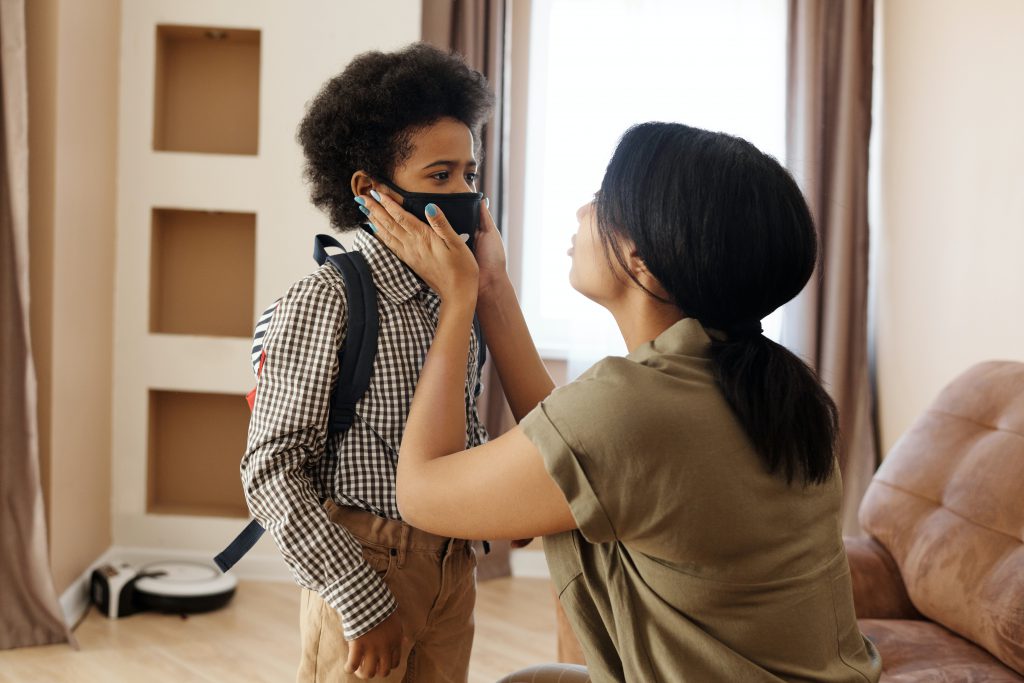
As children are preparing for school, JoHannah Orman, MEd, MA, CCLS, and Laura Sufka, MA, CCLS, Certified Child Life Specialists and instructors in the Institute of Child Development’s child life program, share ways you can help preschool and school-aged children become more comfortable with wearing a face covering or mask.
- Explain why wearing a face covering is important. Younger children may be upset because they don’t understand the reason for wearing a face covering. Explain that wearing a face covering is important because we want to keep our own germs close to our bodies, so we don’t get others sick.
- Use developmentally appropriate language and strategies when providing explanations. This means using simple words, basic explanations, and inviting children to ask questions to help them understand.
- Offer choices. Children may feel a loss of control about having to wear a face covering. In fact, it’s developmentally appropriate for them to resist, complain, or refuse. To increase their sense of control, have them choose the color or design they want or ask if they’d like to decorate their own face covering.
- Listen for your child’s feelings about wearing a face covering. Allow for more highs and lows with their feelings and help them know that their feelings are OK. Let them know that you are always available to talk and that they can ask questions at any time.
- Provide opportunities for play. Play can help increase comfort with wearing a face covering, as well as help with managing stress during uncertain times. Try putting face coverings on stuffed animals, playing peek-a-boo, or expressing different feelings with your eyes.
- Practice wearing face coverings. It’s normal for children to need extra time to adjust to changes in the world around them. Practicing at home can prepare children for times when wearing a face covering is required.



